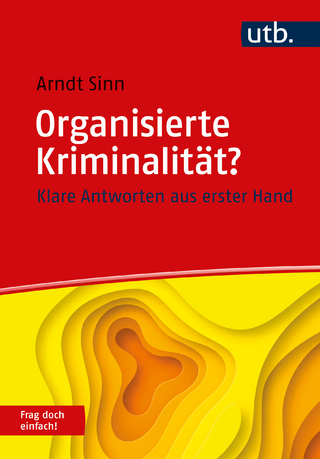
How to Stop a Hijacking
CRC Press (Verlag)
978-1-032-37315-7 (ISBN)
Hijackings and bombings have plagued civil aviation since 1930 and air rage incidents are on the rise. While there is aircraft and inflight training available for air marshals, other first responders receive minimal training on inflight security awareness and protocols. There are no other resources currently available to flight crews or armed first responders that specifically address inflight security and how to address threats of disturbances on airplanes.
How to Stop a Hijacking provides readers with fundamental principles on how to think more critically about onboard security threats. The aircraft cabin poses unique environment and security challenges, and first responders can apply security awareness and critical thinking skills to establish a safer environment in the cabin and airport for everyone onboard. The lessons in this book are driven with the central objective of teaching the reader how to counter inflight aggression and maintain tactical control of the cabin. Written by a former federal air marshal instructor, this book looks at the recent rash of air rage incidents and violence on airplanes, in addition to the real and ever-present threat of hijack or potential explosive device.
How to Stop a Hijacking is a practical guide that offers methodological and tactically proven strategies for stopping violent acts onboard an aircraft inflight.
Clay W. Biles is a former US Federal Air Marshal and inflight security instructor. Biles joined the Federal Air Marshal Service in 2008 and flew more than 1 million miles on international and domestic flights. Biles resigned in 2013 and founded High Order Security, a company that assists at-risk personnel in Latin America. He lives in the San Francisco Bay Area with his wife and two children.
I. The Basics of Inflight Security 1. Introduction to Inflight Security 2. A Brief History of Threats to Civil Aviation 3.Terrorist Attack Planning and Hijack Tactics 4. Inflight Jurisdiction, Inflight Awareness, and Layers of Aviation Security II. Behavioral Detection and Adversary Recognition 5. Passenger Profiles 6. Proactive Profiling 7. Surveillance Detection III. Safety and Security Considerations 8. Flight Deck Door Procedure Awareness 9. Passenger Search and Restraint 10. Inflight Medical Response 11. Inflight Fire Response IV. Tenets of Inflight Security 12. The Principles of Inflight Security 13. The Tactical Mission Statement 14. Act Decisively 15. Use Speed, Surprise, and Aggression 16. Simplicity of Tactics 17. Techniques Versus Principles 18. Communication 19. Six-Check 20. Aggressive Mindset, Stress, and Motor Skills Management V. Counter-Hijack Response Strategies 21. OODA-Loop Theory 22. Positions of Dominance and Advantage 23. Considerations for Armed First Responders 24. Considerations for Unarmed First Responders 25. Least-Risk Bomb Location 26. Suicide-Bomber Response 27. Aircraft-Specific Tactics for Armed First Responders 28. Multi-Level Aircraft Considerations 29. Emergency Evacuation 30. Outside Breach of Aircraft 31. Post-Incident Stabilization Conclusion
| Erscheinungsdatum | 20.03.2023 |
|---|---|
| Verlagsort | London |
| Sprache | englisch |
| Maße | 156 x 234 mm |
| Gewicht | 1490 g |
| Themenwelt | Recht / Steuern ► EU / Internationales Recht |
| Recht / Steuern ► Strafrecht ► Kriminologie | |
| Technik ► Bauwesen | |
| Technik ► Umwelttechnik / Biotechnologie | |
| ISBN-10 | 1-032-37315-6 / 1032373156 |
| ISBN-13 | 978-1-032-37315-7 / 9781032373157 |
| Zustand | Neuware |
| Informationen gemäß Produktsicherheitsverordnung (GPSR) | |
| Haben Sie eine Frage zum Produkt? |
aus dem Bereich


